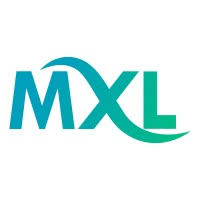
Robinjasper1109
Uploaded on Oct 21, 2025
Your Launchpad to Success: Expert Microlearning Tips for New Adopters | MaxLearn The shift to microlearning is more than a trend; it's a necessary adaptation to the modern professional environment. In fast-paced sectors like Finance, Health care, and Retail, employees are time-poor and information-rich, making long-form training ineffective. For organizations new to the concept, however, starting can feel like a leap of faith. How do you ensure your bite-sized content is truly impactful? This guide, built on expert insights, offers practical, actionable tips to help you move beyond the basics and confidently launch a microlearning strategy that delivers measurable results. Expert Tip 1: Focus on the "Moment of Need" Microlearning is not about shorter training; it’s about "just-in-time" training. Experts recommend mapping out the exact moments an employee needs information to complete a task or solve a problem. Scenario Mapping: For a Banking employee, a moment of need is identifying a suspicious transaction. For a Pharma sales rep, it's quickly recalling a specific clinical trial detail before a doctor's visit. Actionable Content: Design your Microlearning Courses to fit these moments perfectly. The content should answer one question, resolve one immediate need, and be delivered right at the point of action—usually via a simple, mobile-friendly Microlearning Application. This approach ensures high relevance and immediate knowledge application, which is crucial for retention. Expert Tip 2: Decouple Content from Duration A common pitfall for novices is setting arbitrary time limits (e.g., "all videos must be under three minutes"). Expert practitioners focus instead on the content objective. If the single, essential objective requires seven minutes to explain clearly and interactively, then seven minutes is the correct duration. The goal is to maximize knowledge transfer, not just minimize time. Interactive Design: Focus on making the content engaging, not just short. Incorporate elements like drag-and-drop exercises, short scenarios, and instant feedback. This keeps employees—whether they are on a remote Mining site or an Oil and Gas platform—actively involved rather than passively watching a quick video. Expert Tip 3: Master the Multi-Tool Ecosystem A winning microlearning strategy requires a suite of specialized Microlearning Tools, not a single piece of generic software. Building a high-performance ecosystem involves three essential components: Creation Power: Invest in robust Microlearning Authoring Tools. The best tools allow non-technical subject matter experts (SMEs) to create polished content quickly. Look for an AI-powered Authoring Tool that can take existing documentation—like a large compliance manual for Insurance—and intelligently suggest or build micro-modules from it, drastically speeding up your initial content rollout. Smart Delivery: Use a centralized Microlearning Platform or a powerful Microlearning LMS. This is the brain of your operation. It should organize your Microlearning Courses and offer deep analytics to track not just who completed the content, but how well they retained the knowledge. Intelligent Personalization: The most impactful systems now incorporate an AI-Powered Learning Platform. This technology uses performance data to automatically deliver personalized content, recommending a specific refresher snippet to a Health care professional who made an error in a procedural simulation. This ensures training time is always spent on the most critical skills. Expert Tip 4: Shift from Completion to Competence In traditional training, success meant high attendance and high completion rates. In microlearning, the focus must shift entirely to competence and business impact. Experts advise linking every microlearning course directly to a measurable KPI. Establish Baselines: Before rolling out a series of snippets on, say, new product features for Retail, establish a baseline of current product knowledge. Track Behavior: After deployment, use the analytics from your Microlearning Platforms to track changes. Is the time spent processing returns decreasing? Are customer satisfaction scores increasing after frontline training? Iterate Constantly: Use the data provided by your Microlearning Software to identify ineffective content or persistent knowledge gaps. This constant, data-driven iteration is what separates a good microlearning launch from a sustainable, high-impact program. By implementing these expert tips, new adopters can move past the initial challenges and harness the true potential of microlearning, creating a more agile, knowledgeable, and high-performing workforce across any industry.

Comments